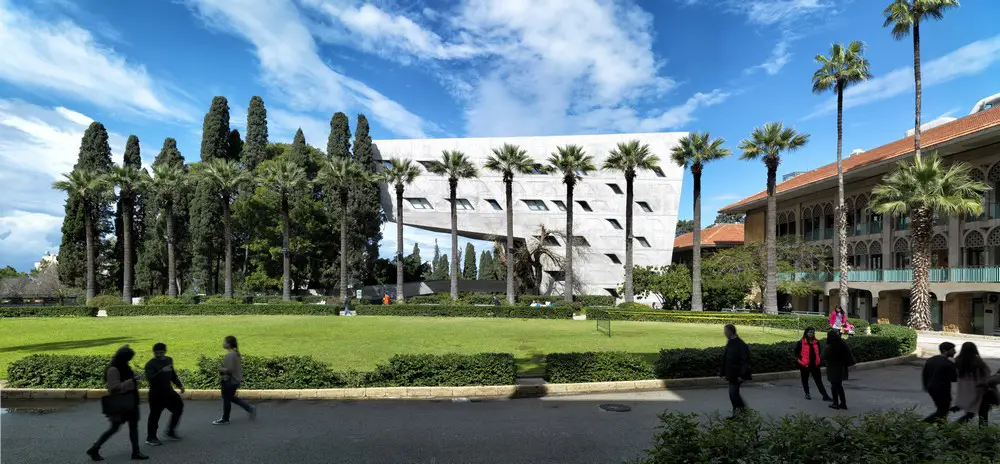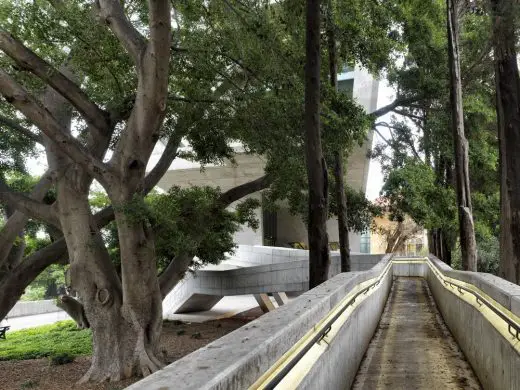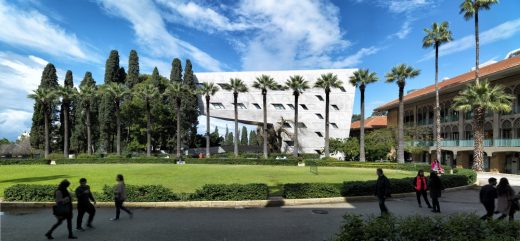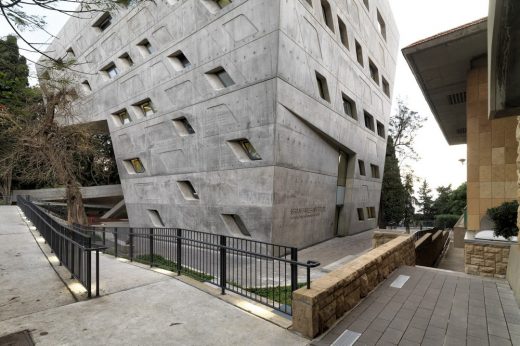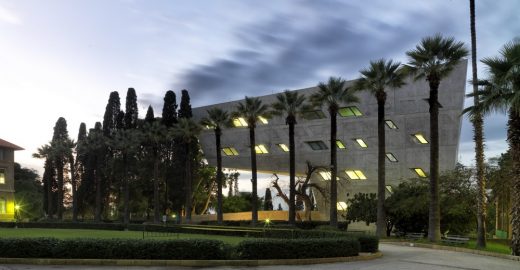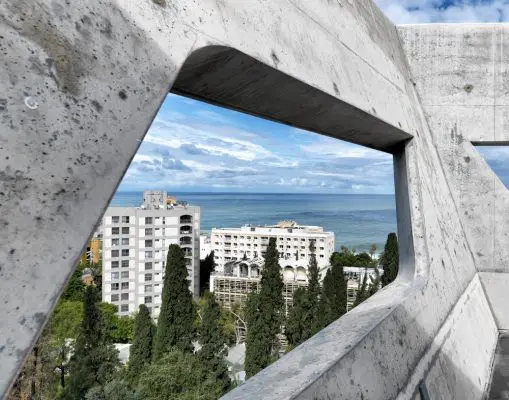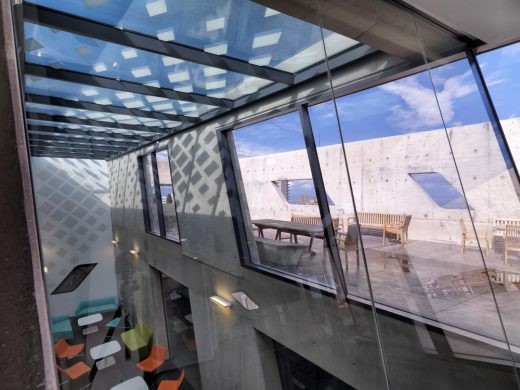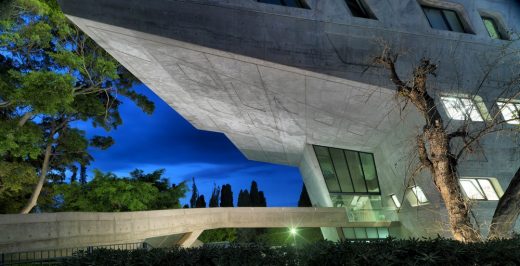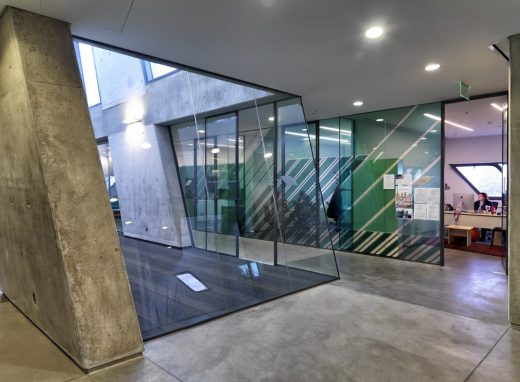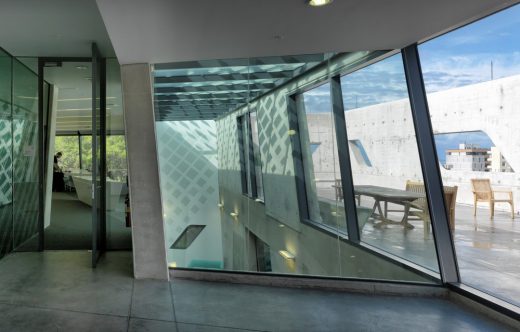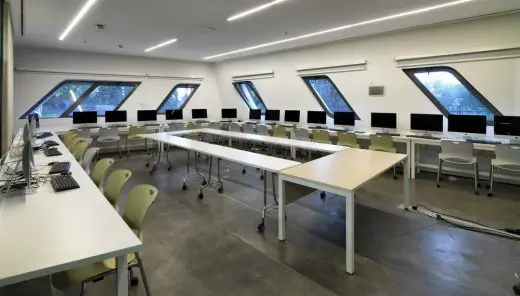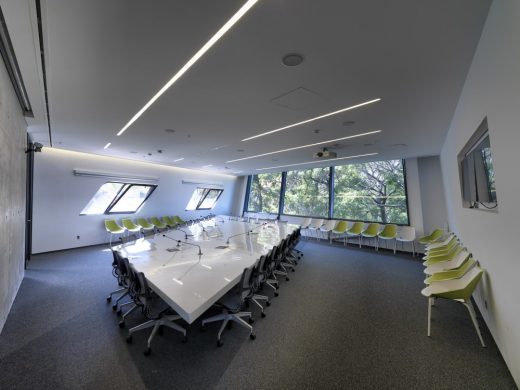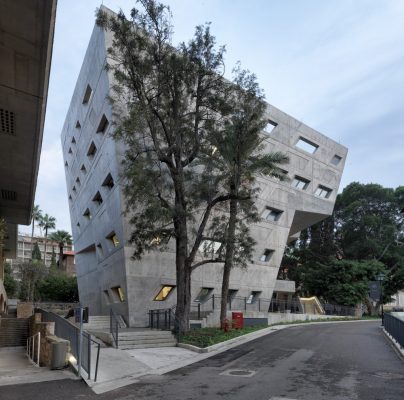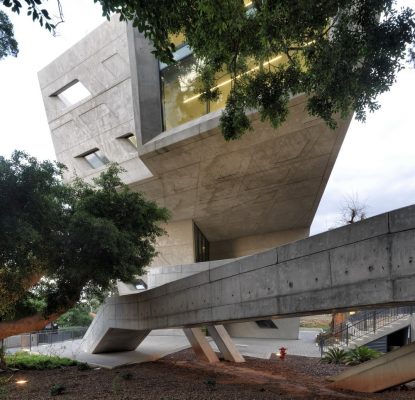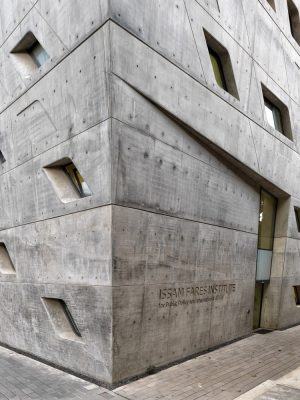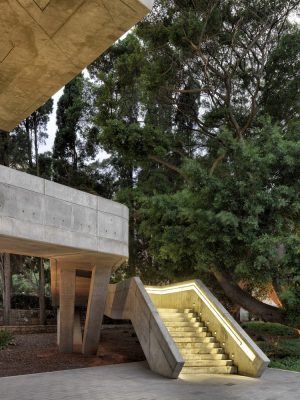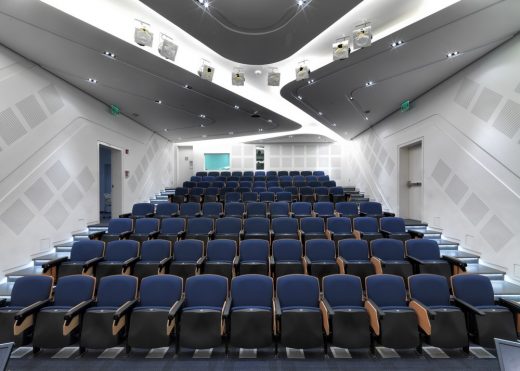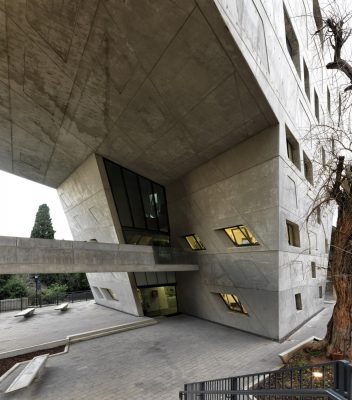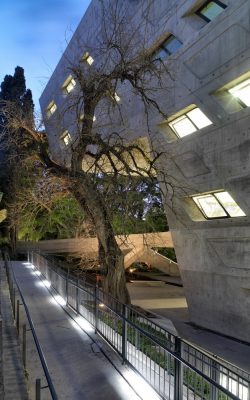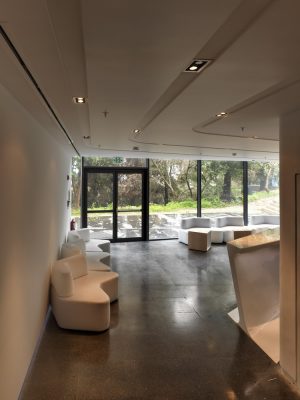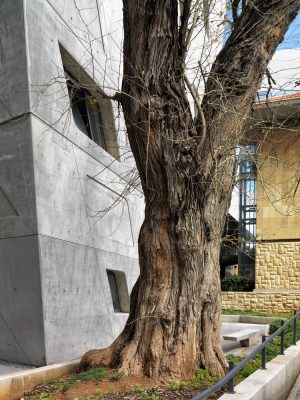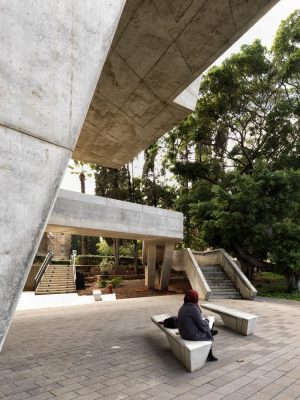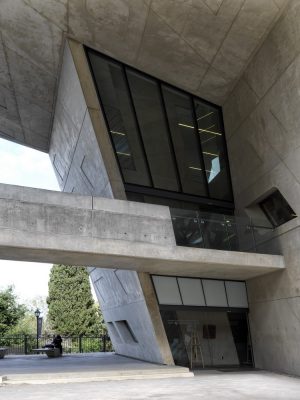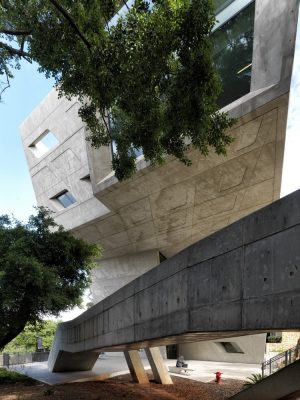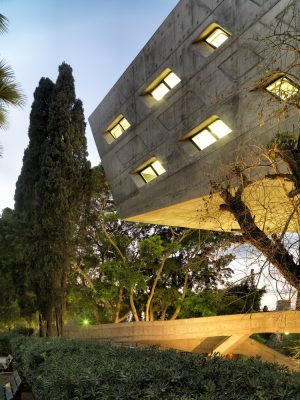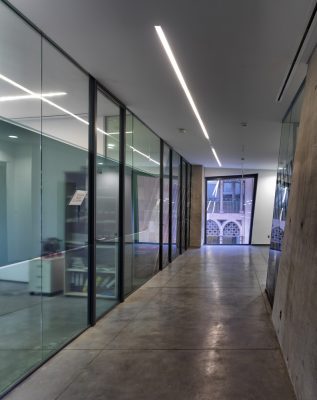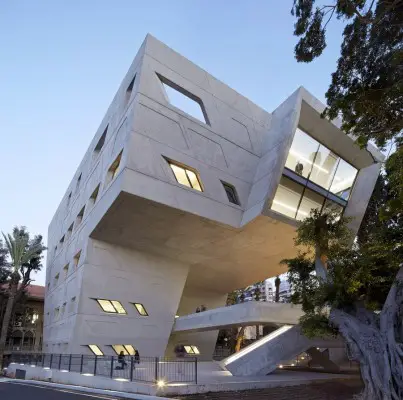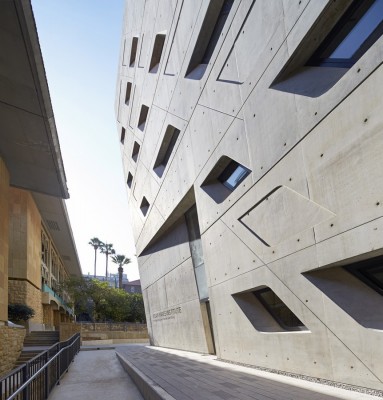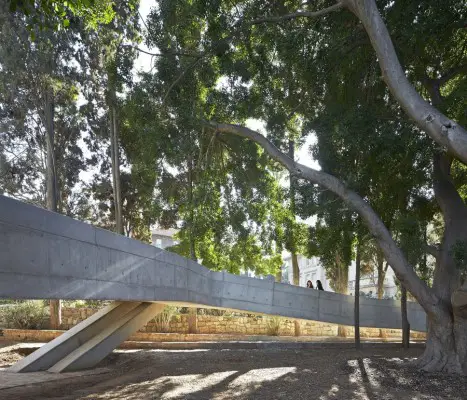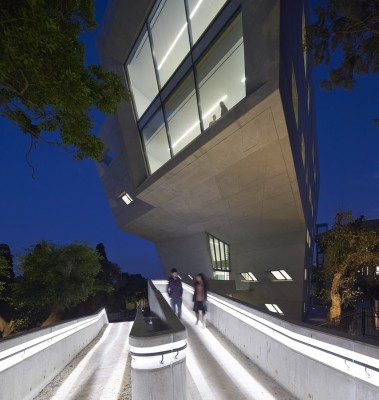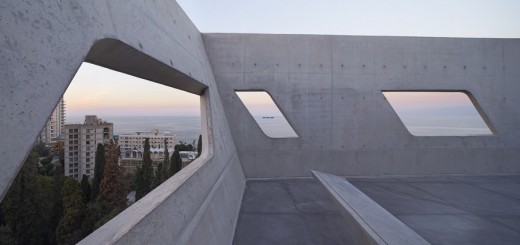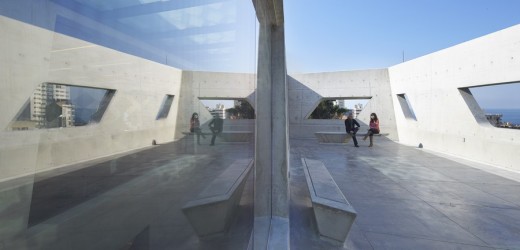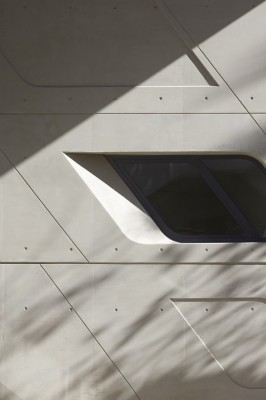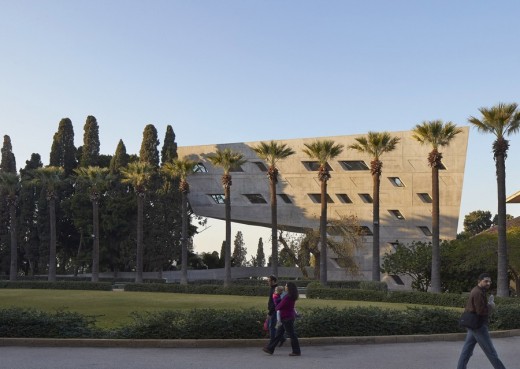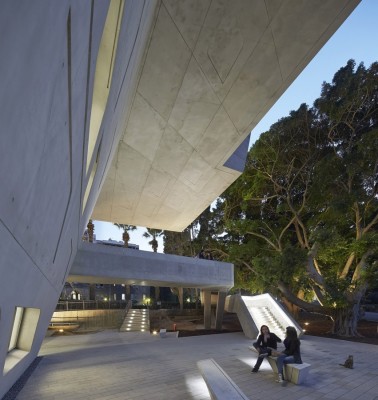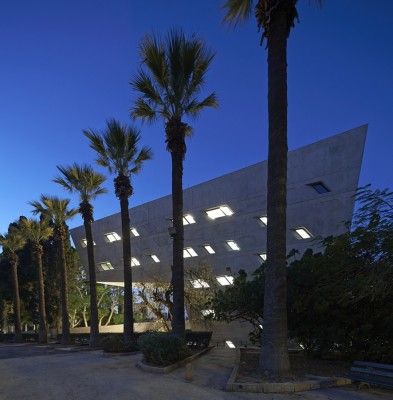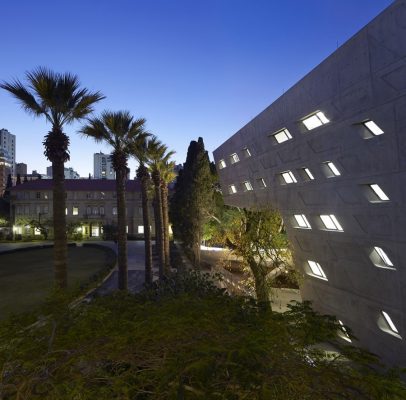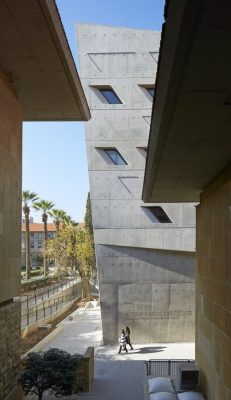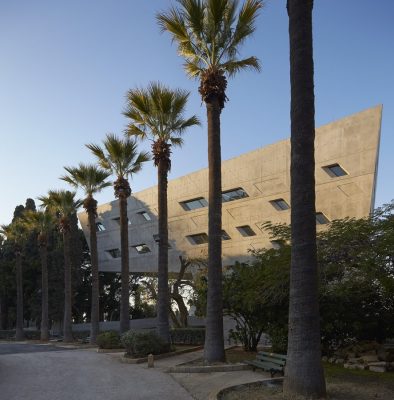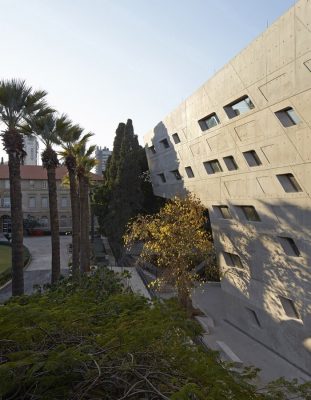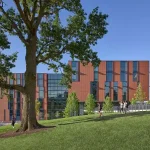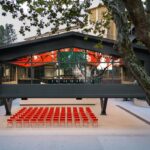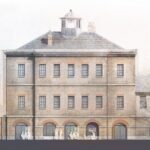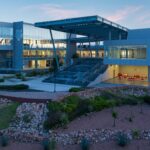Beirut University Development, Lebanon Building Images, IFI Design, Architecture
Issam Fares Institute in Beirut
Issam Fares Institute for Public Policy and International Affairs (IFI) design by Zaha Hadid Architects
Design: Zaha Hadid Architects
A new building for the American University of Beirut’s campus, radical in composition but respectful of its traditional context.
3 Oct 2016
Issam Fares Institute, Beirut
Abu Dhabi, UAE, 3rd of October 2016 – The winners of the Aga Khan Award for Architecture were announced today in a ceremony in Abu Dhabi.
Issam Fares Institute Building in Beirut
One of the 6 winning projects, selected a shortlist of 19 projects, chosen from 348 nominations.
The Master Jury’s citation:
“As the last in a series of buildings, the Issam Fares Institute completes the central oval courtyard of the upper campus of American University of Beirut, located on a hill overlooking the Mediterranean. This educational building solves a dense programme within a surprisingly small footprint in a manner that is sensitive to its context. With its contemporary form and the purity of its architectural language the building differentiates itself from its neighbours, though it is not in conflict with the campus and its architecture.
“Cantilevering over the courtyard and overlooking the old cypress and ficus trees, the building presents an extremely powerful and authentic volumetric structure without obstructing the view of the buildings behind. The building’s height, matched with that of the trees and the surrounding structures, serves to strengthen the powerful relationship it creates with its context. Throughout, a fluid planning strategy has turned to advantage the level variances of the site, and a welcoming environment has been created by providing entrances at various levels via ramps that weave through existing trees, in the process becoming part of the landscape themselves.
“The building makes a courageous – and at the same time fully respectful – contribution to the multi-layered physical environment of this historic and rooted university campus. With its simple, exposed concrete surface and strong volumetric presence, it is an elegant yet unique solution to a complex and special context.”
A new building, radical in composition but respectful of its traditional context, “floats” above an exterior courtyard.
The American University of Beirut (AUB) held an invited competition for the design of a structure to accommodate a modern-day think tank on its lush middle campus, one that was in harmony with the rest of the university, especially mindful of the surrounding greenery, and to preserve, as far as possible, existing sightlines to the Mediterranean.
The building had to fit into another stage in the implementation of a master plan for AUB, whose upper campus overlooks the water, and whose lower campus is located on the seafront.
The architect responded to the project brief by producing a design that significantly reduces the building’s footprint by “floating” a reading room, a workshop conference room and research spaces above the entrance courtyard in the form of a 21-metre-long cantilever in order to preserve the existing landscape.
The 3,000 sqm building is defined by the routes and connections within the university; the building emerges from the geometries of intersecting routes as a series of interlocking platforms and spaces for research and discourse.
The massing and volume distribution fits very well with the topography, and the nearby Ficus and Cyprus trees are perfectly integrated with the project.
The building’s construction is a continuation of the 20th century Lebanese construction culture of working with fair-faced concrete.
Award Cycle: 2014-2016 Cycle
Status: Recipient
Location: Beirut, Lebanon
Client: American University of Beirut
Architect: Zaha Hadid Architects
Design: 2007-08
Size: Site area: 7’000 m2; Built area: 3’000 m2
Completed: 2014
Issam Fares Institute, an Aga Khan Award for Architecture Winner in 2016 information from Aga Khan Award
Issam Fares Institute in Beirut prize – shortlisted for Aga Khan Award for Architecture 2016
12 + 11 Jun 2014
Issam Fares Institute Beirut Design
Beirut, Lebanon
Design: Zaha Hadid Architects
Issam Fares Institute for Public Policy and International Affairs at the American University of Beirut
The Issam Fares Institute for Public Policy and International Affairs (IFI) building by Zaha Hadid Architects (ZHA) at the American University of Beirut (AUB) continues the on-going implementation of the 2002 AUB Campus Master Plan by Sasaki Associates (in collaboration with Machado and Silvetti, MGT of America, and Dar Al-Handasa, Shair and Partners) to advance the university’s academic mission in the 21st Century with facilities of the highest international standards.
The IFI was established as a neutral, dynamic, civil, and open space where people representing all viewpoints in society can gather and discuss significant issues, anchored in a long-standing commitment to mutual understanding and high quality research. The institute aims to harness, develop and initiate research of the Arab world to enhance and broaden debate on public policy and international relations. It currently works on several programs addressing the region’s issues including the refugee crisis, climate change, food security, and water scarcity, youth, social justice and development, urbanism, and the UN in the Arab world.
Relocating the infirmary closer to the new university hospital presented AUB with the opportunity to build the institute on the constrained site with a 7 metre drop in elevation between its south and north boundaries. The existing AUB campus combines buildings constructed in concrete throughout the 20th Century in a variety of revivalist and modernist styles with different cladding and rendering treatments.
In 2006, the competition jury selected ZHA’s proposal to build the new institute. The design significantly reduces the building’s footprint by ‘floating’ much of the IFI’s facilities above the entrance courtyard to preserve the existing landscape integral to the 2002 master-plan, create a new public space for the campus, and establish links from the university’s Central Oval to the Middle Campus and Mediterranean Sea to the north.
The 3,000 sq. m. Issam Fares Institute building is defined by the many routes and connections within AUB; interweaving the pathways and views within the campus to create a forum for the exchange of ideas – a centre of interaction and dialogue – at the heart of the university.
The IFI design introduces new links between the Central Oval with the forested area of the Middle Campus and sea beyond. Existing Ficus and Cypress trees on the IFI site (aged between 120 and 180 years old) are integral to the design. The building emerges from the geometries of intersecting routes as a series of interlocking platforms and spaces for research, engagement and discourse.
The institute invites the community inside via the many connections and paths that converge at its double-height entrance courtyard. This new civic space for the university is a covered outdoor terrace and extension of the shaded area beneath the existing trees – a place for chance meetings and informal discussion – located at the nexus of pathways that traverse the site.
A ramp leads between the trees to connect the research lounges on the second floor directly with the campus, while the first floor seminar room and offices are accessed at grade from the east and public courtyard to the west. These routes meet within the IFI to describe the atrium hall; establishing the institute as a crossroads – a central hub for students, faculty, researchers and visitors.
The IFI’s reading room, conference workshops and research rooms ‘float’ above the exterior courtyard. The 100-seat auditorium is on the lowest level with its own entrance to the north, enabling the institute to host larger conferences and presentations without disrupting students, fellows and researchers working throughout the building. Internal partitions are in ink-pigmented glass to enable communication and interaction.
The building takes full advantage of the region’s tradition and expertise of working with in-situ concrete. Passive design measures, high efficiency active systems and recycled water technologies minimise the building’s impact on the local and wider environment.
The IFI’s design builds upon the institute’s mission as a catalyst and connector between AUB, researchers and the global community. Routes, views and links within the campus converge to define the IFI as a three-dimensional intersection; a space for university’s students, fellows and visitors to meet, connect and engage with each other and the wider world.
IFI Beirut photography © Hufton + Crow
Issam Fares Institute in Beirut images / information from Zaha Hadid Architects
Location: Beirut, Lebanon
New Lebanese Architecture
Contemporary Lebanese Architectural Selection
Lebanese Architecture Design – chronological list
Beirut Architecture Walking Tours
BeMA – New Beirut Museum of Art Building
Design: architect Hala Wardé, HW Architecture
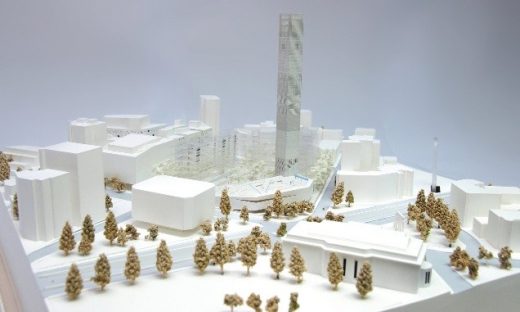
image Courtesy of Beirut Museum of Art
BeMA: New Beirut Museum of Art Building
Amir Shakib Arslan Mosque Building, Mukhtarah
Design: L.E.FT, Architects
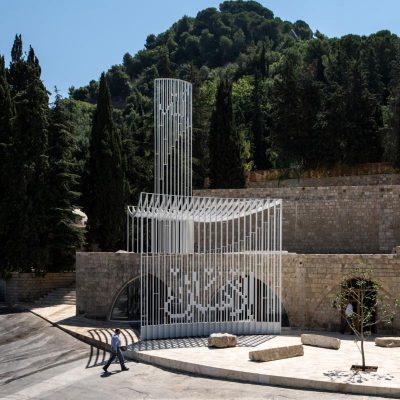
image from architects
Amir Shakib Arslan Mosque Building
K Galleria, Kaslik, Keserwan District of the Mount Lebanon Governorate
Design: MZ Architects
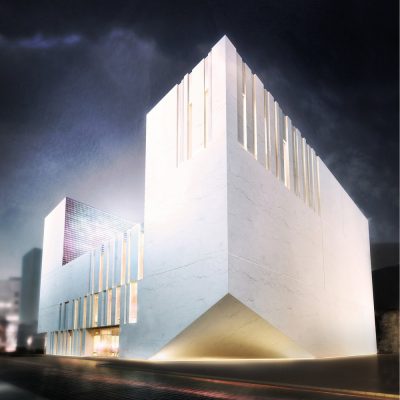
image from architects
K Galleria Building in Lebanon
House of Arts and Culture Competition
Comments / photos for the Issam Fares Institute in Beirut – IFI Building Lebanon page welcome

